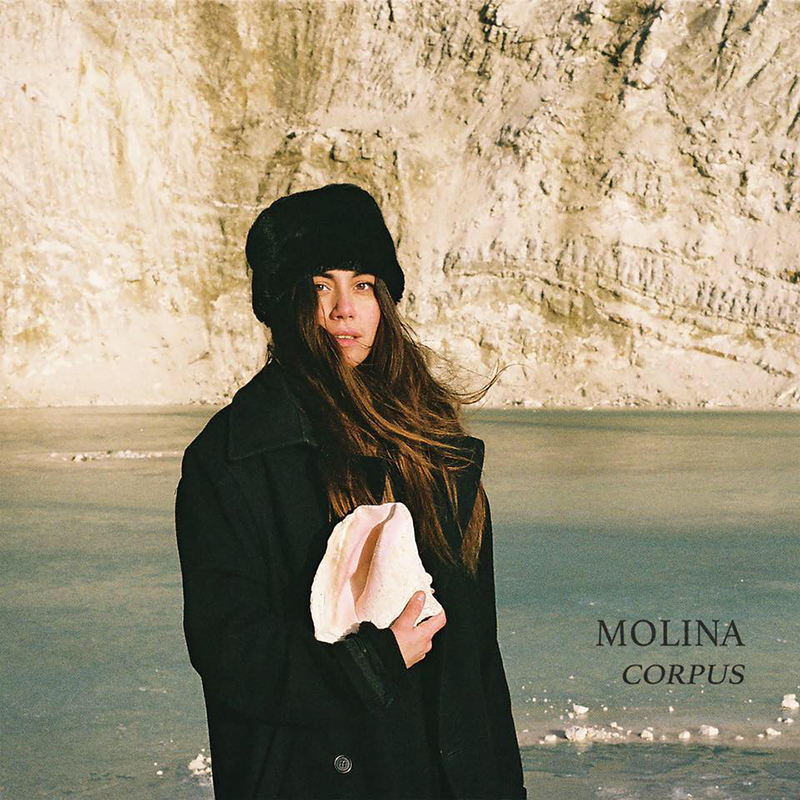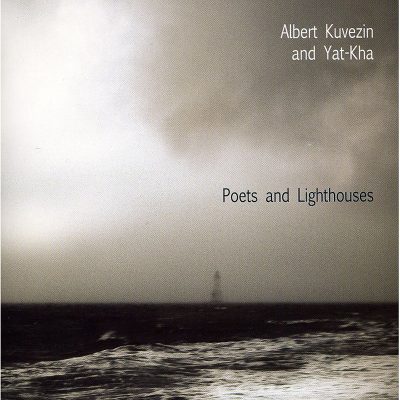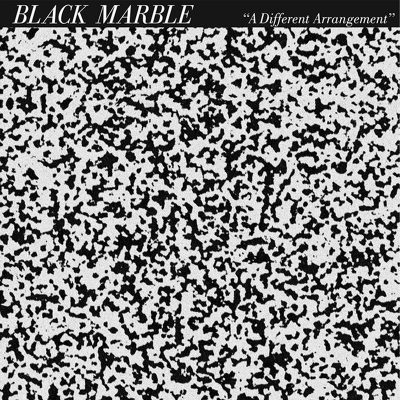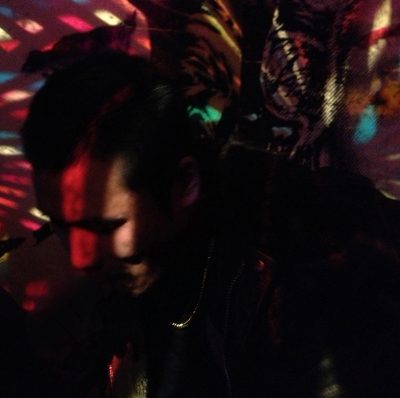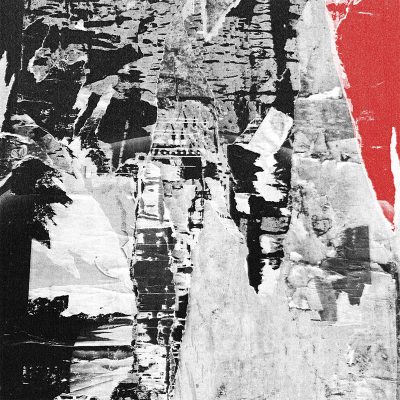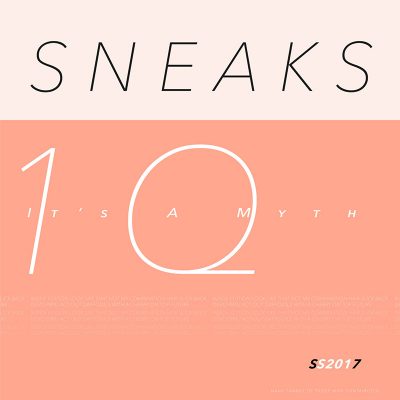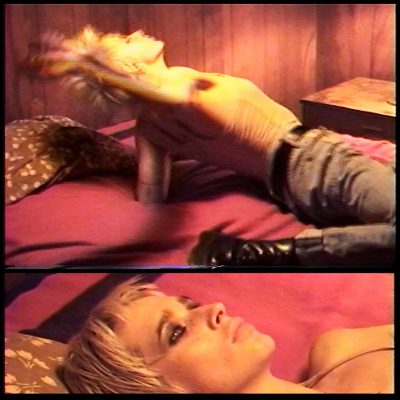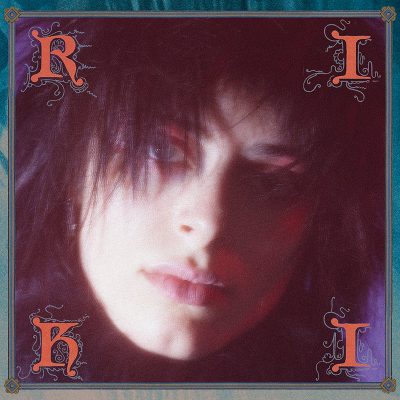Editor’s Picks: 10 Post-Punk Albums from the 2010s that You’ll Love into 2020
Year-End Top 5
When I was just going down the Joy Division rabbit hole in 2009 on Pandora, I had no idea how fruitful the 2010s would be for post-punk. Over the past decade, I’ve enjoyed countless post-punk albums. It felt necessary to talk about some of my favorites that I’ve encountered—by and large—through SLUG Magazine, in some shape or another. I decided to round up 10 of my favorites (one from each year). I hope you enjoy them as much as I do.
Post-punk, in and of itself, is a fairly liberating genre. Over the past 40-plus years, artists have been able to shepherd myriad other genres from post-punk, from electronic-based darkwave to acoustic rock n’ roll with folk pastiches. What the hell even is post-punk anymore, given all the growth that’s sprouted from it? Here, I’m thinking of it as a nexus of different sounds that have been a part of this pop-music-historical conversation. In this list, enjoy post-punk—from acoustic to electric to electronic—with wildly different feels.
Also, before we kick things off, some shameless promotion of local post-punk(-adjacent) friends for you to check out: David Moon, Durian Durian, Corner Case and Muzzle Tung.
Honorable Mention: 2017 – Molina
Corpus – EP
Tambourhinoceros
Street: 03.24.2017
Molina = Frankie Rose x Lust for Youth
Though she’s more on the pop end of the spectrum, Molina nods to post-punk with the synthpop she has under her belt. Corpus features nice selections for the heat of the party. My spouse found Molina via a Los Espookys playlist of songs from the series, so look to that series for even more gems. Favorite track: “Salvation.”
2010 – Albert Kuvezin and Yat-Kha
Poets and Lighthouses
Yat-Kha Records
Street: 10.11.2010
Albert Kuvezin and Yat-Kha = late Leonard Cohen + Vladimir Oidupaa√Talking Heads
For those who know me, it will come as no surprise that the surefire pick from 2010 is Poets and Lighthouses by Albert Kuvezin and Yat-Kha, a Tuvan band that features Kuvezin’s Tuvan throat-singing (khöömeï). Yet, listening to this album’s steady, bass-buttressed rhythms, their post-punk cachet is undeniable. Despite being homogeneously lumped into the “world music” category on streaming apps and in other catalog systems, Kuvezin and his band consistently wed the folk-music traditions of Tuva with contemporary and subdued rocker sensibilities for a band who is—I truly believe—like no other.
Poets and Lighthouses has a bit of a folk-goth gait. Throughout, of course, Kuvezin eases through his trademark kanzat kargyraa, traditional kargyraa, sygyt and khöömeï throat-singing (perhaps more), all of which characterizes Yat-Kha’s sound. On some tracks, such as with “The Cry,” runic-sounding backup singing and moans wend through Kuvezin’s khöömeï. Overall, each song’s composition feels deep and well-orchestrated. My favorite track on this album is “The Way My Poetry Should Go,” with its spellbinding, syncopated guitar work and ripping solo on a Tuvan wind instrument (limbi, shoor) or maybe a pipe instrument (amyrga)—still trying to figure out which. With all its deep, stirring music, Poets and Lighthouses is one of my very favorites of all time.
2011 – Timber Timbre
Creep On Creepin’ On
Arts & Crafts
Street: 04.05.2011
Timber Timbre = Nick Cave and the Bad Seeds + Elvis Presley + Last Ex
Timber Timbre’s Creep On Creepin’ On is definitely in my top-five-favorite albums—ever. Its consistent use of thumpy bass serves as a post-punk propeller in a doo-wop-inflected assortion of tracks. This integration bridged their previous freak-folk work with new territory that Ian Curtis may have coveted. I’ve previously written that, sonically, Creep On Creepin’ On is a “backwater microcosm”—as its through-composed, instrumental dirges (such as “Obelisk”) between its traditional “songs” invoke aural swamps that surround these songs. This imparts some profound, intra-album narrative dimension to the stories found in the lyrical/love songs. It’s an environment in which the speaker may creep in perpetuity through frontman Taylor Kirk’s singing.
There’s nary a misstep on Creep On Creepin’ On. My top lyrical tracks are “Bad Ritual,” with its gospel-informed chorus, and “Black Water,” in whose refrain Kirk croons, “All I need is some sunshine / All I need …” as he draws out the last word into a euphony that reaches for a grey sky. The music video for “Black Water” features a drowned aquanaut and a scorpionesque monster of the deep. Its murky ambience—whether by design or not—recalls the depressive tone of the album’s instrumental tracks. Overall, the project was and is superbly cohesive, and I revisit Creep On Creepin’ On time and again.
2012 – Black Marble
A Different Arrangement
Hardly Art
Street: 09.09.2012
Black Marble = (Blank Dogs – Jay Reatard) x Asylum Party
Coldwave group Black Marble’s breakout album, A Different Arrangement, excels with its spareness and space. Rather than mere washes of synths, synth-produced melodies and undulations reflect the sense of purpose with which Black Marble arranged A Different Arrangement’s songs, which could be conceived of as something like ennui pop. Yet, latent in each track is grit. The spartan-feeling instrumentation amalgamates with—yet again—driving, 16th-note basslines, which lend A Different Arrangement a punk punch. Even in slower-paced songs like “A Great Design,” an anxious urgency swirls over machine-produced beats perfectly in time—a brutalist architecture.
Album opener “Cruel Summer” is the perfect preamble to the album, a curious but forlorn lure into its compelling navel-gazing. The title track and “Static” put some pep in Black Marble’s step with their catchy backbeats, “Limitations” desponds with an infectious vocal melody, and “Pretender (Album Version)” exudes a paradox of confidently pining for “Carolina.” The album becomes increasingly spacey from there, as in “Last”—with its sonorous, droney singing—and the instrumental closer, “Unrelated.” This is a contemporary dose of coldwave with surprising earworms that elicit repeat listens. Pound for pound, what may substantiate A Different Arrangement’s marrow are its synergetic hooks.
2013 – Dirty Beaches
Drifters / Love Is the Devil
Zoo Music
Street: 05.21.2013
Dirty Beaches = ONO / (early-’10s Liars – MSTRKRFT) + Hype Williams + The Cramps + Suicide
Something I deeply regret is that I missed the hypnagogic-pop movement in which Dirty Beaches took part in the early 2010s. Acquainting myself with other prominent artists of that era such as Hype Williams confirms why Dirty Beaches (aka, the immensely talented Alex Zhang Hungtai) was the artist who made it onto my radar. Drifters / Love Is the Devil is a tour-de-force double album with entry points into the grimy, culverted alleyways of your and Hungtai’s psyches.
With all its groove and reverb-decayed percussion, Drifters is the visceral half of the dual release. Opener “Night Walk” leads us into the darkness of a David Lynch–approved club to dance to its pulsing beat. The second track, “I Dream in Neon,” returns to the feel of previous Dirty Beaches albums (Badlands and Night City) with a pentatonic melodic line over which Zhang Hungtai sings dispassionately. Yet, the subsequent “Belgrade” signals a lapse into something more sinister by anchoring in its electro-psychedelic virtuosity. “Casino Lisboa” follows and ushers us into another sonic chamber whose brittle percussion undergirds Hungtai’s proclamatory vocals. Each room we enter is its own beast, and the mean mien of “Aurevoir Mon Visage” is the visceral apotheosis of Drifters, as it features Hungtai’s semi-guttural utterances and shouts atop strident drum patterns. “Mirage Hall” is the capstone finale of this half of the journey—it’s electric punk beholden to Suicide’s antagonism, whirling with unnerving bellows of “¡Te quiero!” amid twangy bass slaps.
Love Is the Devil is a kind of afterlife of Drifters. Where Drifters is difficult to discuss without alluding to the arc that the track order creates, Love Is the Devil bleeds together with serene washes and solemn melodies. In hindsight, this half was an auditory staging area for Dirty Beaches’ 2014 album, Stateless, which was Hungtai’s conversion to a full-bore ambient artist. Yet, the blips of “Woman” are redolent of something that Damaged Bug would make, and I enjoy the rhythms that peek above the lapping tonal fugues in this half of the release. The guitar work of “Alone at the Danube River” even recalls Santana’s “Samba pa’ tí.” It’s almost as if the emotions we’re meant to experience with Love Is the Devil are emulations of those we feel right before waking, albeit as we recollect our regrets. Further, “Like the Ocean We Part” is a lullaby for waking, ending with train whistles that lead into elegiac closer “Berlin.”
This body of work overlays the conceptual departure, absence and return of the sun. It’s an exploration of nighttime vis-à-vis human emotions and raw psychology. Dirty Beaches/Alex Zhang Huntai forged a magnum opus with Drifters / Love Is the Devil.
2014 – Protomartyr
Under Color of Official Right
Hardly Art
Street: 04.08.2014
Protomartyr = The Middle Class x Parquet Courts
Protomartyr may be the most rockist of artists on this list, yet Under Color of Official Right enchants with its pensive, jangly guitar melodies. Those melodies create eddies in which frontman Joe Casey splashes around with his baritone singing, often on the cusps of shouts. There’s a sense of looseness about the album, wherein the tempo and arrangements allow the drums room to bounce and agitate. The space in Under Color of Official Right’s songs recalls ’70s protopunk à la Television but frustrated through the kind of rancor found in The Middle Class’ less raucous work (versus their straight-up proto-hardcore).
Notable tracks include “Bad Advice,” “Scum, Rise!” and “Come & See,” but the entirety of Under Color of Official Right features the aforementioned sonic characteristics. Protomartyr create a distillate of blight in this album—it’s as if we’re in a long music video wandering through their abandoned Detroit hometown with no one else but them there, playing music that bolsters Casey’s beat-like poetry. Under Color of Official Right is well thought of as a kind of auditory cinematic experience with a bittersweet mood. Protomartyr entreat us to digest Under Color of Official Right in one sitting, and it’s enticing to do so.
2015 – The Soft Moon
Deeper
Captured Tracks
Street: 03.31.2015
The Soft Moon = Tears for Fears + A Place To Bury Strangers + Clan of Xymox
As The Soft Moon, Luis Vasquez delivers gritty darkwave, and Deeper contains caustic electronics that could’ve made Lemmy flinch with its punk affront. Vasquez’s production in Deeper feels layered, with lots of electronic instruments iterating melodies and saturating the ether with pads. Many of the electro-tones, such as in “Wrong,” sound like lasers firing off in a robot-ruled dystopia. With Deeper, Vasquez endeavored to explore isolation, self-doubt and other demons, and what resulted was a dynamic record with artistic aplomb.
The production quality of Deeper feels cavernous. The vocal effects on Vasquez’s singing often lend it the illusion that there are two people singing perfectly in sync, and the overall sound design houses songs that vary from each other and hold interest throughout. Standouts are “Far” (because of its speed, Robert Smith vibes and that post-punk BASS again), “Wasting” (catchy singing melodies, which earns the Tears for Fears comparison above) and “Deeper” (tom-y drumbeats and rhythmic panache). The Soft Moon unearthed a delightful trove of treasures with Deeper, and Vasquez hasn’t lost steam ever since.
2016 – Carla dal Forno
You Know What It’s Like
Blackest Ever Black
Street: 10.28.2016
Carla dal Forno = Dirty Beaches – Suicide + Siouxsie and the Banshees
I love a succinct dose of minimalism, and Carla dal Forno’s music satisfies every time. You Know What It’s Like is a full extension of dal Forno’s two-limbed pose: gently sung songs and eerie yet charming instrumental tracks. The breadth of You Know What It’s Like allows both approaches to form a bicameral but interwoven suite of songs that soothe as much as they provoke with their smirking darkness.
Dal Forno often repeats samples and sounds, such as in “Dry in the Rain.” This imparts meditative qualities to You Know What It’s Like. Mentioning the simplicity with which dal Forno creates, however, isn’t to downplay the power of intention that I hear in her music. The tracks play out with a purpose and mindfulness that underscore dal Forno’s grace.
The crown jewels of You Know What It’s Like are the songs in which dal Forno sings. I mean this in the most complimentary of ways that dal Forno invokes Dolores O’Riordan in “Fast Moving Cars.” Singing in “What You Gonna Do Now,” dal Forno incites a quiet crisis, almost as if the song’s namesake lyrics are an existential taunt. Dal Forno guides us with her voice in the title track and “The Same Reply,” each treading similarly gloomy terrain found in Virginia Woolf’s novels—but we could also think of You Know What It’s Like as a garden of aural flowers.
2017 – Sneaks
It’s a Myth
Merge
Street: 03.31.2017
Sneaks = Delta 5 x Devo + Santigold – The Clash
It’s a Myth slaps. Its beats are crisp and hit hard while Sneaks (Eva Moolchan) revels in her weirdness. She’s sassy all the while, and the groove of It’s a Myth generates a dance-by-myself-in-the-corner ambience. And I should’ve just titled this list “Alex Likes Bass—K, Bye,” but this time I really mean it: Sneaks’ bass-playing is largely what gave this album so much bounce amid its quirky comportment. She’s all over a scale in “Hair Slick Back.”
Sneaks has a penchant for choosing how to place her lyrics and which to repeat—in this song and all the others—in a way that complements the instrumental skeletons of her tracks and sustains our urge to bop along. “Look Like That” begs to be sung along to—“What does it look like?” Sneaks asks. “It looks like that,” she responds, definitively. It’s this kind of stare-you-in-the-face self-affirmation and slinky, sleek vocal phrases that sound so badass. Moreover, the beat in “Look Like That” resembles a production by the Beastie Boys. It’s a Myth proliferates this mood in all 10 of its tracks, and when you need it, you need it badly.
2018 – Shopping
The Official Body
FatCat
Street: 01.29.2018
Shopping = Gang of Four + Delta 5
From the onset of opener “The Hype,” you know that Shopping’s The Official Body is dripping with style and the trio’s sheer instrumental skill. That song welcomes us with its dancy beat and melodies. A three-piece, Shopping percolate their spare, distortion-less compositions with seemingly socially deconstructive lyrics. “Asking for a Friend,” another favorite of mine here, continues the thoughtful dancemosphere—and to be blunt, Shopping are just incredible songwriters. What’s more, the production quality of The Official Body is top-notch. It’s inventive releases like these that lead me to question whether a band with a guitar-bass-drums-vocals setup is in the “rock” genre at all.
Even on tracks such as “Discover”—in which the band repeats, “Go fuck yourself”—the songs are all smart. That is, smart in that the work effuses cleverness. The nuances of each phrase, musical or linguistic, weave a tight sound-fabric that comprises The Official Body. The vocabulary of the guitars ricochets against the drums—especially in “Suddenly Gone”—each member touting defiant instrumental lyricism. Yet, none of these instrumental voices clash or crowd each other nor the singing. The arrangements are unbelievably tight on The Official Body, and Shopping are keeping it going with their upcoming release of All Or Nothing in February 2020.
2019 – Boy Harsher
Careful
Nude Club
Street: 02.01.2019
Boy Harsher = Sally Dige^(Chelsea Wolfe / New Order)
“Keep Driving” is the perfect introductory track for when Careful’s subsequent track, “Face the Fire,” drops—because “Face the Fire” is a supreme song by coldwave/darkwave duo Boy Harsher. This is music for driving at night or dancing with a stranger—it feels dangerous. I can’t tell you how many times I’ve listened to “Face the Fire” since I first gave Careful a spin. If you get a chance to see Mexican film This Is Not Berlin, it transports you to the avant-garde, post-punk music scene of that film, and it’s addicting.
Careful feels tough but sexy—the pulsating synth of “Come Closer” underpins the allure of the song’s sultry demand: “Come closer.” This primal sensuality abounds on Careful. All of the tracks are dance bangers for punx and goths, yet it’s also perfect to unwind to from more intense musical experiences—you could throw this on at the afterparty of a hardcore show. “Tears” is playful in its Eurythmics-informed synth-work, and “Crush” gives us an atmospheric break. Tracks from Careful are perfect for your New Year’s shindig (with your cat or other humans), and I’m a fan of Boy Harsher because of it. Shout-out to SLUG alum Erin Moore for the recommendation.
Kicking off 2020: Riki
Self-titled
Dais
Street: 02.14.2020
Riki = New Order + Molina + Siouxsie and the Banshees + Saâda Bonaire
If the artists/releases on this list interest you, 2020’s looking to continue this momentum with Riki’s self-titled. This far away from the release, I shouldn’t say much, but be on the lookout!
Speculative Mention – Where to go from here in the ’20s?
Other than the normal trajectory of the genre that we can expect it to go, I wonder if there will be any outright dips into the genre from R&B artists. It would be cool to hear some forthright post-punk from fka Twigs, Frank Ocean or a post-punk permutation of Devonté Hynes‘ work as Blood Orange.
More on SLUGMag.com:
Review: Timber Timbre – Sincerely, Future Pollution
Localized: Alexander Ortega
